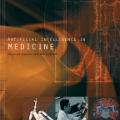We aim to counter the tendency for specialization in science by advancing a language that can facilitate the translation of ideas and methods between disparate contexts. The focus is on questions of "resource-theoretic nature". In a resource theory, one identifies resources and allowed manipulations that can be used to transform them. Some of the main questions are: How to optimize resources? What are the trade-offs between them? Can a given resource be converted to another one via the allowed manipulations? Because of their ubiquity, methods used to answer them in one context can be used to tackle corresponding questions in new contexts. The translation occurs in two stages. Firstly, methods are generalized to the abstract language. Then, one can determine whether potentially novel contexts can accommodate them. We focus on the first stage, by introducing two variants of an abstract framework in which existing and yet unidentified resource theories can be represented. Using these, the task of generalizing concrete methods is tackled in chapter 4 by studying the ways in which meaningful measures of resources may be constructed. One construction expresses a notion of cost (or yield) of a resource. Among other applications, it may be used to extend measures from a subset of resources to a larger domain. Another construction allows the translation of resource measures from one resource theory to another. Special cases include resource robustness and weight measures, as well as relative entropy based measures quantifying minimal distinguishability from freely available resources. We instantiate some of these ideas in a resource theory of distinguishability in chapter 5. It describes the utility of systems with probabilistic behavior for the task of distinguishing between hypotheses, which said behavior may depend on.
翻译:我们的目标是扭转科学专业化趋势,方法是推进一种语言,促进不同背景之间思想和方法的翻译。重点是“资源理论性质”问题。在资源理论中,我们确定资源,允许用于改变资源。一些主要问题是:如何优化资源?它们之间的权衡是什么?一个给定资源能否通过允许的操纵转换为另一个?在一个背景下用来回答它们的方法,因为其不存在,在一个背景下用来回答它们的方法可以用来解决相应的问题。翻译分为两个阶段。首先,方法被普遍化为抽象语言。然后,人们可以确定可能的新环境是否适合它们。我们侧重于第一阶段,引入两个抽象框架的变式,在其中可以代表现有和尚不明的资源理论;利用这些变式,在第四章中通过研究如何构建有意义的资源计量方法来解决通俗化的具体方法问题;其中一种结构可以说明一种成本(或收益)概念,在新背景下处理相应的问题。在其它应用中,可以使用一种从一个理论性的行为标准,从一个理论性的角度,将资源结构的精确度的精确度尺度扩大到另一个资源领域。利用另一种结构的精确度衡量方法,从一个结构的精确度,将资源结构的精确度的尺度,将另一种结构的尺度的尺度从一个尺度从一个尺度转换为一个尺度,将另一个资源法则将资源的尺度的尺度,将资源特性的尺度作为另一个的尺度,将资源的尺度的尺度的尺度的尺度,将另一个的尺度的尺度作为基础。




